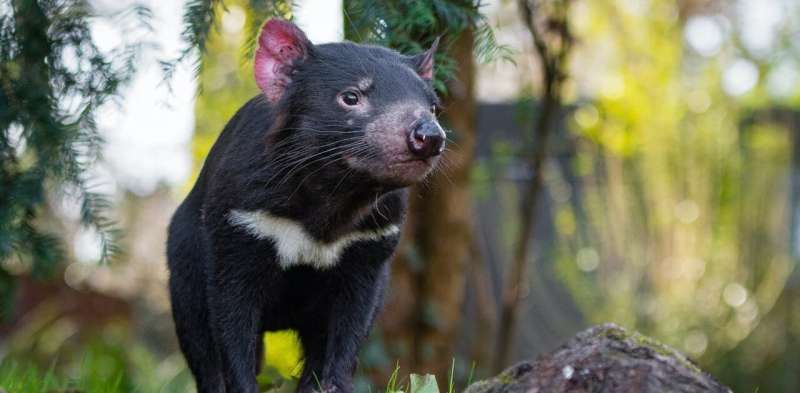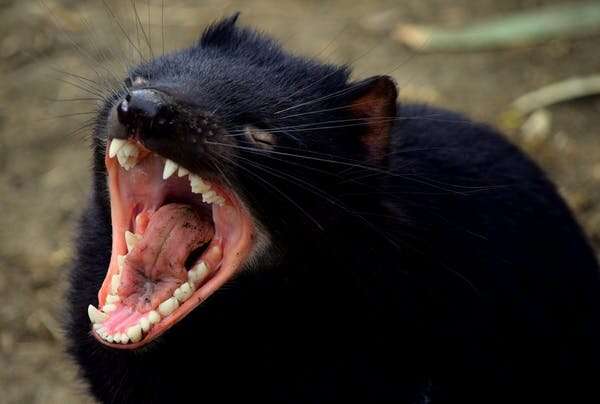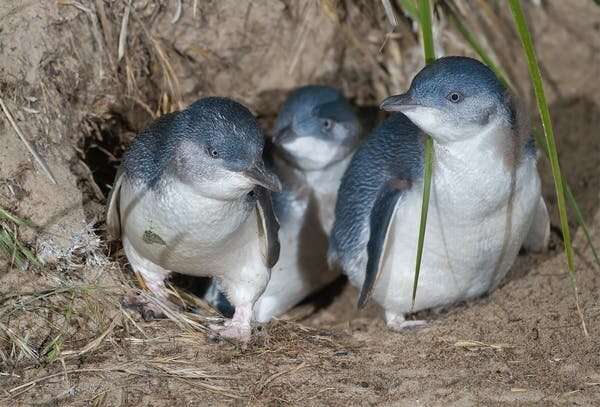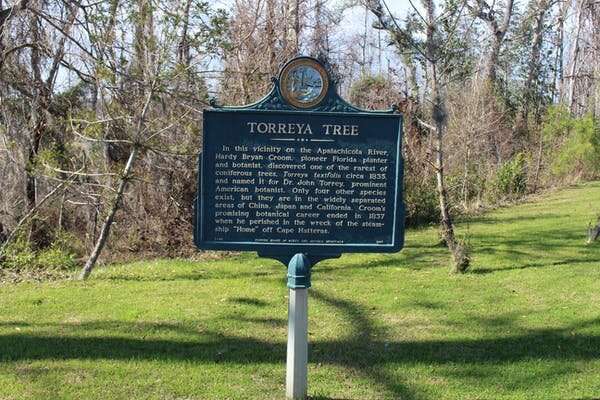Assisted migration may be a solution to climate-driven population damage. Credit: Matthias Appel/Flickr, CC BY-SA
As climate change brings record droughts and floods, extended fire seasons continue to make headlines, and the role of humans in this terrible situation is now undisputed, institutional change has been slow and unsteady. In particular, conservationists have been wary of pointing to climate change as the biggest threat to biodiversity, given the many other threats that exist.
But the situation may now be changing. In the last 18 months, the IUCN Red List—which lists species' extinction risk status—recorded a 52% increase in species listed as being threatened by climate change. Conservationists are being forced to consider whether their conventional approach of maintaining, not changing ecosystems, needs to be adapted to a changing world.
You may have heard of situations where threatened species are released back into areas they used to occupy in the wild. Examples include the restoration of rhinos in Africa and wolves in North America.
However, in our research, my colleagues and I showed that many failed reintroductions are taking place in regions where the climate isn't suitable for the species being released.
This undermines attempts to protect species in their former habitats and is a warning that climate change is already restricting the habitat of threatened species.
In some cases, new habitats become available as the change in climate conditions allows species to survive in areas that were previously too cool. But unless they can populate these new habitats—an adjustment which is tricky for most—many threatened species will experience a reduction in their current range.
Tasmanian devils are carnivorous predators who can disrupt ecosystems. Credit: MappingMeganTravel/Pixabay, CC BY
"Conservation translocation", also known as assisted migration, assisted colonization and managed relocation, describes interventions that could be used to tackle climate change-driven species declines and extinctions.
Instead of leaving species to suffer in hotter and drier environments, we can try to expand their range by moving them to new habitats. This overcomes situations where species can't move by themselves, such as plants whose seeds disperse only a few meters at a time, or birds who won't leave the safety of their woodland home to seek new territory.
However, this approach remains controversial due to the perceived risks of moving species to ecosystems they've never experienced before. Risks include spreading diseases into new habitats, aggressive competition with resident species for prey or space, and the introduction of new predators.
An example of this last problem is that of the Tasmanian devils moved to Maria Island off the coast of Tasmania, to protect against a contagious cancer ripping through their population.
These predators found an easy supply of prey in the form of short-tailed shearwaters (also known as moonbirds) and little penguins, themselves species of concern. Both bird species have now been eradicated from Maria Island.
But translocations are a conservation option that we can't just dismiss. A new paper on assisted migration from a team of international researchers calls for the risks of translocation to be balanced against the risks of doing nothing at all. Given the immediacy of the climate crisis, it is now the path of least risk that we must take.
The complex relationships between species are easily disrupted by new predators. Credit: Wikimedia, CC BY
Early days
There are only a handful of attempted assisted migrations undertaken specifically to reduce the negative effects of a warming world.
A good example is the western swamp turtle: Australia's rarest reptile, thought to be extinct for a century but recently discovered near Perth. The turtle feeds in ephemeral pools that appear after seasonal rains, but droughts are shortening their feeding window by several weeks: with consequences for the species' reproductive success.
For the western swamp turtle, translocations to cooler, wetter sites to the south of their current range offer the right type of habitat and enough food to survive ongoing droughts. These appear to be the safest long-term place for the turtles to thrive, and trial translocations are already reporting good results.
Time to act?
Plants are in a similar predicament. In a recent collection of papers in the Journal of Ecology, a group of Italian researchers estimated under pessimistic (but highly probable) climate change scenarios that 90% of 188 threatened plant species may need assisted migration to cope with habitat loss.
A historical marker in Torreya State Park explains the history of the Torreya tree. Credit: Wikimedia, CC BY
But while researchers are using computer models to predict the future needs of threatened species, one group has decided that the time to act is now. The Florida torreya, the most endangered coniferous tree in the US, has been moved north by a group of citizens known as the Torreya Guardians. They exploited a loophole in US law that allows plant translocations on private land by the public but prevents federal conservation authorities from doing the same thing.
The species' current range is extremely restricted but was much more widespread before the last global ice age. The Torreya Guardians argue that the specimens of Florida torreya growing across the US provide evidence that the species can thrive beyond its current restrictions.
With new temperature records being set all the time—and melting ice, sea-level rise and historic droughts affecting the whole planet—it's only a matter of time before climate-induced extinctions become a regular feature in the headlines.
It's time for calls for better global policy on assisted migration to be heeded. We need guidance so that we, as a global community of concerned citizens and conservation scientists alike, can act decisively to protect the survival of threatened species.
Provided by The Conversation
This article is republished from The Conversation under a Creative Commons license. Read the original article.![]()



























